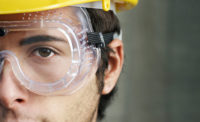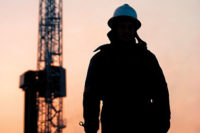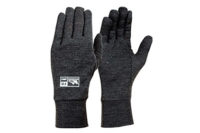The tremendous growth of oil industry activity in the area has created a corresponding demand for flame-resistant (FR) clothing for the thousands of workers being added to company payrolls at a rapid rate. Bacon compares it to a gold rush. “When we first went into that town, it was almost impossible to find a pair of FR jeans or a good pair of boots.”
Emptying out the trailer
The two men, who’d previously worked as a sales manager (Bacon) and a Los Angeles police officer (Johnson) began selling FR clothing out of a trailer three days a week, Monday through Wednesday. “By Thursday it would be empty,” said Bacon. The trailer would be restocked as quickly as possible, but it was clear that a larger space was needed. Within four months, they’d moved their business into a building on Main Street. The aptly-named “FR Store” (www.thefrstore.net) sells everything from jeans, shirts, hoodies and coveralls to hard hats, safety glasses and boots.
Bacon said he and Johnson initially began teaching themselves what they needed to know about FR clothing through online research. “And once we got into the business, we started talking to manufacturers – they’re all very well educated about their products.”
When a customer is new to the oil industry – as many are -- is it challenging to help him figure out what kinds of protective clothing he needs? “Most of the time his company has already determined that,” said Bacon, who notes that many shoppers come in with a list. “The whole outer layer has to be FR, from wrists to ankles to neck.”
Relying on standards
Because FR clothing can significantly reduce both the extent and severity of burn injuries, OSHA requires that it be worn during operations which have an inherent risk of flash fires, such as drilling and well servicing. A flash fire is capable of generating temperatures of 1,000 to 1,900 degrees Fahrenheit and can last up to five seconds – long enough to cause severe burns.
The oil industry relies on the National Fire Protection Association’s NFPA 2112 “Standard on Flame-Resistant Garments for Protection of Industrial Personnel Against Flash Fire,” which specifies performance requirements and test methods for flame-resistant fabric and garments. It also covers “design, construction, evaluation and certification of flame-resistant garments for use by industrial personnel, with the intent of not contributing to the burn injury of the wearer, providing a degree of protection to the wearer, and reducing the severity of burn injuries resulting from short-duration thermal exposures resulting from accidental exposure to flash fires.”1
Bacon anticipates demand leveling off in the future, and notes that the infrastructure of the town and surrounding area has developed since the FR Store opened. There are now fast food restaurants, pizza places, hotels and retail stores – including some competitors. “There’s just a lot more places to get FR.”
He and Johnson aren’t worried, though, because they’ve built up a considerable customer base in the nearly three years they’ve been in business. “We’ve gotten to know a lot of those guys. We hear all the stories,” he said.
1. www.nfpa.org/codes-and-standards/document-information-pages?mode=code&code=2112




